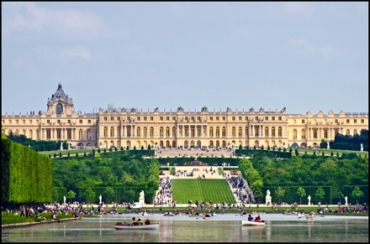
Tourists flock to Nelson Mandela's cell on Robben Island, a ferry ride away from Cape Town. (Julia Pelish photo)
[This article about Nelson Mandela’s overwhelming presence in South Africa was published in the Toronto Star in June 2010, just prior to the start of the World Cup. Here it is again, on Mandela’s 93rd birthday.]
CAPE TOWN, SOUTH AFRICA—On top of everything else, Nelson Mandela could probably provide the most compelling argument there is against capital punishment. Convicted of treason and terrorism against South Africa in 1964, Mandela would likely have been executed were it not for international pressure to spare his life. The thought of a world without Mandela and his astounding magnanimity is sad; the thought of a South Africa without him is enough to cause a shiver.
Mandela emerged from prison in 1990 with every reason to chase vengeance. Instead, he chose a divine path of forgiveness and reconciliation that lifted the country out of apartheid and showed the world the power of grace. Now, his name has become an industry in South Africa.
You can see where he was born, the home where he lived prior to his arrest, the location where he was taken into custody, the university that bears his name, some of the houses he now owns and, of course, the place with which he is most identified: Robben Island, the 12-square-kilometre dot of sand and limestone where Mandela was imprisoned for 18 of his 27 years of incarceration.
The island off the coast of Cape Town became known as Mandela University, because the lawyer would educate both inmates and prison guards. Tours that include a round-trip ferry ride and a discussion by a former prisoner cost 400 rand (about $55). From those ex-inmates, you learn about the degradation of apartheid that occurred inside the prison too, where the subordination of black political prisoners was constantly reinforced. Prisoners who were Indian or mixed race, for example, would be given six ounces of meat with their dinner, the blacks five.
Mandela’s prison cell attracts a crowd, making it the only lock-up in the world people are eager to get into. They can’t; its bars remain shut but visitors can step into a similarly cramped pen a few cells down the tight hallway that fills with echoes. Just about everyone who walks in spreads their arms to get a sense of the space. You’ve been in walk-in closets that are larger.
“I could walk the length of my cell in three paces,” Mandela wrote in his autobiography, Long Walk to Freedom. “When I lay down, I could feel the wall with my feet and my head grazed the concrete at the other side.”
When you leave Robben Island, you can stop at the gift shop to purchase Mandela merchandise, including a “presidential collection” line of shirts similar to those he wore during his presidency. Another set of fashion blares “466/64”, his prison number. It indicates he was the 466th prisoner to arrive on Robben Island in 1964.
While Mandela or his lawyers approved the sale of goods at Robben Island, not everything tied to his life has his support. On the contrary, he’s often said his name is not for sale. But as his legacy builds the potential for him to be exploited grows.
“There’s a lot of people in the country making money off of his name and he’s not seeing any of it, his children’s foundation isn’t getting any of it,” says Tanya Kotze, owner of Africa Direct, one of the country’s leading travel agencies. “I wish they would let the old man be.”
No one seems ready to let go of him, however. South Africans are delighted with even a glimpse of Mandela these days, when politicians are carrying on in ways that would be laughable if the nation wasn’t on a precipice.
read more »







